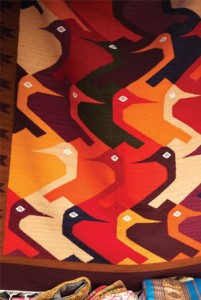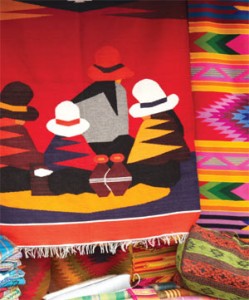
Well, I just got back from the center of the world, and I found it a very interesting and entertaining place. In fact, it makes me wonder why more travelers don’t go there. After all, there can be only one center of the world. I admit it took me over one hundred and twenty countries until I got around to going there; but believe me, it is now high on my return list.
Where is the center of the world? Well, the center of a math problem is represented by the equal sign. The center of the year is the equinox. And, of course, the center of the world is the equator. And there, right on that “line,” spreading to both sides, is the wonderful little country named after it – Ecuador.
Let me tell you what you’ve missed if you’ve ignored it thus far in your travels.
The locals talk about the four divisions of the land – each division populated by its own group of individual people. There is the coastal area bordering the Pacific Ocean, the mid-area of subtropics, the higher elevation of the plains, and of course the Galapagos Islands. The focus for me in this story will be the high plains. I’m going to save the rest, especially the Galapagos Islands for later. 
Sitting in a long thin valley at over nine thousand feet is the city of Quito. The location of this valley frustrates map makers because it runs north and south, making them put the standard arrow which points north on most maps in a very awkward position.
Quito is surrounded by high saw-toothed mountains, most of them composed of extinct volcanoes. There is a great legend which has the two masculine volcanoes, Imbabura, and Mojanda, fighting to win the love of Cotacachi, the good-looking female volcano. The battle between the two muscle men had them throwing huge rocks and boulders all over the place. Imbabura won this mythical conflict to claim the love of Cotacachi, who became his wife.
A geologist would feel that it’s like a bit of heaven with every form of geological formation imaginable – spread all over the place. By the way, none of my guides could tell me what makes a volcano male or female. So I’ll have to leave that to your imagination.
It is apparent while visiting here that the people are a fun-loving bunch. We spent ten days in Quito and found each day was a cause for some sort of celebration. For example, we were wandering around the central area of Old Town on a Monday morning when we heard bands playing and saw guards marching in ceremonial dress. Stopping to investigate we were delighted to see the President of Ecuador, with the US Ambassador to his right step out on the veranda of the government house and say “hi” to all of the people. Actually I believe it was “hola,” a common greeting here.

On Sundays they close many of the main streets and people cycle or jog on what normally is a boulevard jam-packed with cars, taxis, and buses. But during this festive day, bands, mimes, and street vendors were packed down at one end of the wide avenue, and a good time was had by all.
Now back to why these folks call this place “the center of the earth.”
It seems that centuries ago the Mayans, and even before them, the locals looked up at the sky and discovered an interesting phenomenon. If they poked a stick in the ground, one half of the year the shadow fell on one side, while the other half of the year the shadow was on the other. Their impeccable logic told them they were smack dab in the center of the universe.
They tried another experiment with this stick in the ground. Each morning when the sun rose and each evening when it set, they placed a neat little stone at the end of the stick’s shadow. Lo and behold when a year was up and the shadow started all over, they had a perfect circle of marked stones. Once again, their faultless reasoning placed them at this very spot – in the center of the universe.
Apparently they had an earlier version of Stephen Hawking who explained this magic to them, and they prided themselves on being at the very middle of the world.
Although the ego of the people of Ecuador at being in the center of the universe has faded some over the past centuries, these guys are still proud to do their own thing. High in the Andes, where the weather remains unchanged during the year, where the sun proceeds equally to the north and south, where the length of a day of light vs. dark changes hardly at all, these people are a happy lot and a joy to visit and spend time with.
Leave a Reply